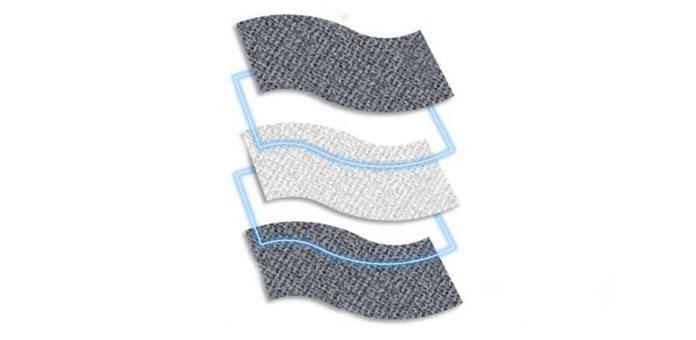Scientists at the University of Cambridge have developed a wearable electronic component that can be incorporated directly into fabrics. This wearable device is originally a graphene ink that can be used in textiles able to store electrical charge and release it when required.
These new textile electronic devices are based on low-cost, sustainable and scalable dyeing of polyester fabric. The inks are produced by standard solution processing techniques. Scientists designed the inks in such a way that they can be used directly onto a piece of polyester fabric in a simple dyeing process. The versatility of the process allows various types of electronic components to be incorporated into the fabric.
Most of the other wearable electronics rely on rigid electronic components mounted on plastic or textiles. But those wearables offer limited compatibility with the skin in many circumstances. They also get damaged when washed and are uncomfortable to wear because they are not breathable.
Dr. Felice Torrisi from the Cambridge Graphene Centre and the paper’s corresponding author said, “Other techniques to incorporate electronic components directly into textiles are expensive to produce and usually require toxic solvents, which makes them unsuitable to be worn. Our inks are cheap, safe and environmentally-friendly, and can be combined to create electronic circuits by simply overlaying different fabrics made of two-dimensional materials on the fabric.”
For this work, scientists suspended individual graphene sheets in a low boiling point solvent, which is effectively expelled after deposition on the fabric, bringing about a thin and uniform conducting network made up of numerous graphene sheets. The subsequent overlay of a few graphenes and hexagonal boron nitride (h-BN) fabrics makes a functioning area, which empowers charge storage. This kind of ‘battery’ on fabric is flexible and can withstand washing cycles in a normal washing machine.
Co-author Professor Chaoxia Wang from Jiangnan University in China said, “Textile dyeing has been around for centuries using simple pigments, but our result demonstrates for the first time that inks based on graphene and related materials can be used to produce textiles that could store and release energy. Our process is scalable and there are no fundamental obstacles to the technological development of wearable electronic devices both in terms of their complexity and performance.”
Through this work, scientists prove that the graphene can be directly used into fabrics to produce charge storage elements such as capacitors. In other words, their works pave the way to textile-based power supplies which are washable, flexible and comfortable to wear.
The study is published in the journal Nanoscale.
